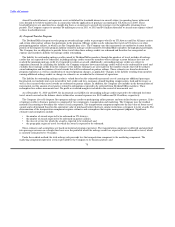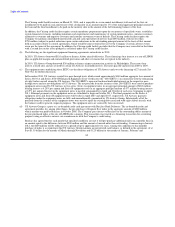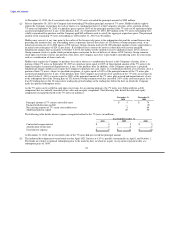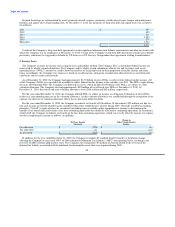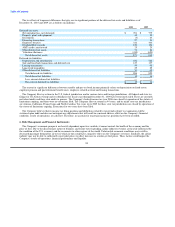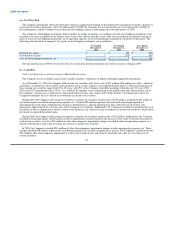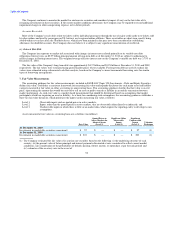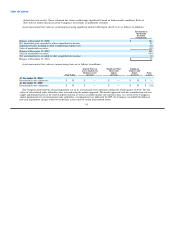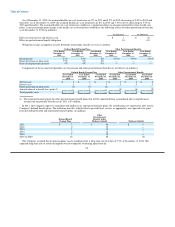US Airways 2010 Annual Report Download - page 89
Download and view the complete annual report
Please find page 89 of the 2010 US Airways annual report below. You can navigate through the pages in the report by either clicking on the pages listed below, or by using the keyword search tool below to find specific information within the annual report.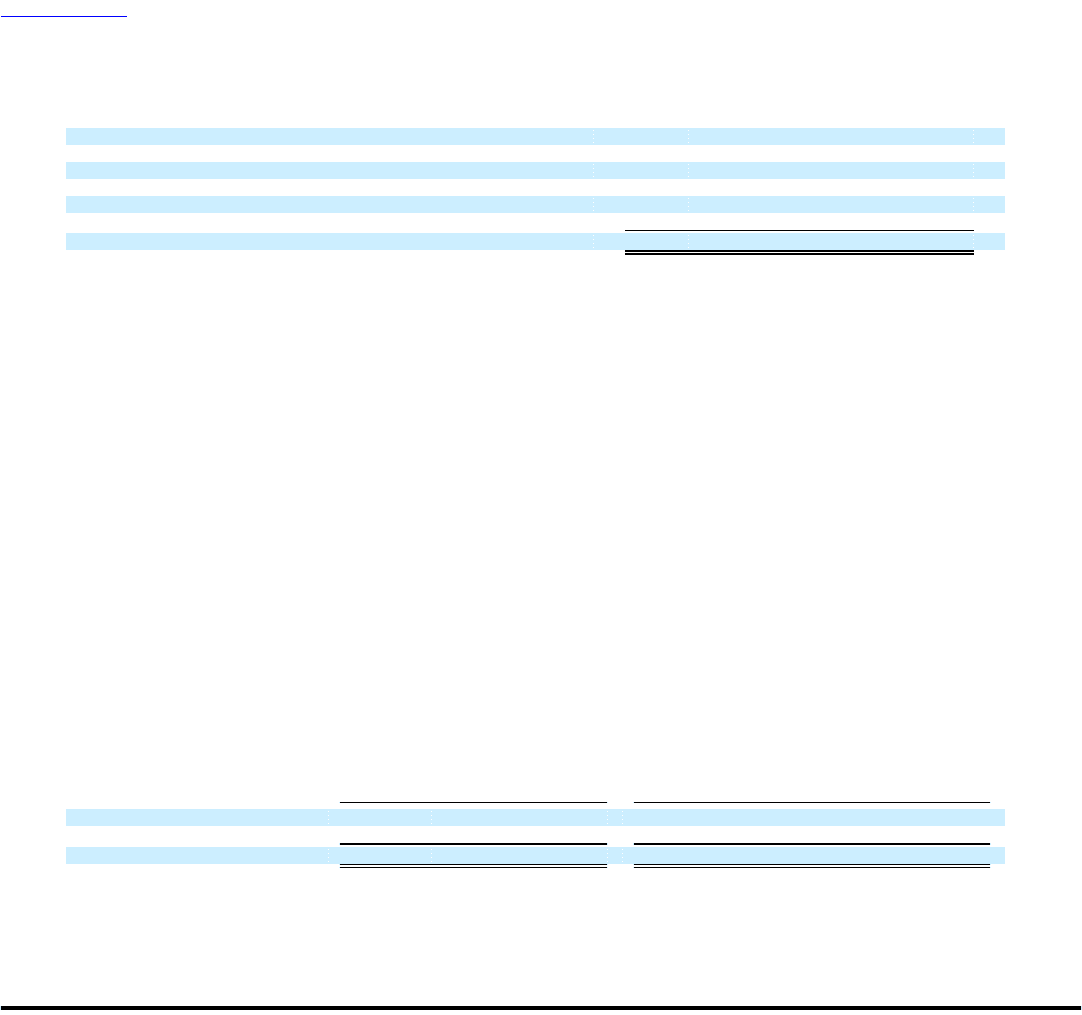
Table of Contents
Secured financings are collateralized by assets, primarily aircraft, engines, simulators, rotable aircraft parts, hangar and maintenance
facilities and airport take-off and landing slots. At December 31, 2010, the maturities of long-term debt and capital leases are as follows
(in millions):
2011 $ 397
2012 455
2013 417
2014 1,555
2015 279
Thereafter 1,514
$ 4,617
Certain of the Company's long-term debt agreements contain significant minimum cash balance requirements and other covenants with
which the Company was in compliance at December 31, 2010. Certain of the Company's long-term debt agreements contain cross-default
provisions, which may be triggered by defaults by US Airways or US Airways Group under other agreements relating to indebtedness.
5. Income Taxes
The Company accounts for income taxes using the asset and liability method. The Company files a consolidated federal income tax
return with its wholly owned subsidiaries. The Company and its wholly owned subsidiaries allocate tax and tax items, such as net
operating losses ("NOLs") and net tax credits, between members of the group based on their proportion of taxable income and other
items. Accordingly, the Company's tax expense is based on taxable income, taking into consideration allocated tax loss carryforwards/
carrybacks and tax credit carryforwards.
As of December 31, 2010, the Company had approximately $1.92 billion of gross NOLs to reduce future federal taxable income. All
of the Company's NOLs are expected to be available to reduce federal taxable income in the calendar year 2011. The NOLs expire during
the years 2024 through 2029. The Company's net deferred tax assets, which include $1.85 billion of the NOLs, are subject to a full
valuation allowance. The Company also had approximately $82 million of tax-effected state NOLs at December 31, 2010. At
December 31, 2010, the federal and state valuation allowances were $368 million and $62 million, respectively.
For the year ended December 31, 2010, the Company utilized NOLs to reduce its income tax obligation. Utilization of these NOLs
results in a corresponding decrease in the valuation allowance. As this valuation allowance was established through the recognition of tax
expense, the decrease in valuation allowance offsets the tax provision dollar for dollar.
For the year ended December 31, 2009, the Company recorded a tax benefit of $38 million. Of this amount, $21 million was due to a
non-cash income tax benefit related to gains recorded within other comprehensive income during 2009. Generally accepted accounting
principles ("GAAP") require all items be considered (including items recorded in other comprehensive income) in determining the
amount of tax benefit that results from a loss from continuing operations that should be allocated to continuing operations. In accordance
with GAAP, the Company recorded a tax benefit on the loss from continuing operations, which was exactly offset by income tax expense
on other comprehensive income as follows (in millions):
Change in
Net Loss Income Other Comprehensive
Statement Income
Pre-allocation $ (226) $ 46
Tax allocation 21 (21)
As presented $ (205) $ 25
In addition, for the year ended December 31, 2009, the Company recorded a $14 million benefit related to a legislation change
allowing the Company to carry back 100% of 2008 Alternative Minimum Tax liability ("AMT") net operating losses, resulting in the
recovery of AMT amounts paid in prior years. The Company also recognized a $3 million tax benefit related to the reversal of the
deferred tax liability associated with the indefinite lived intangible assets that were impaired during 2009.
88


